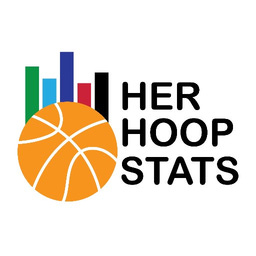2022 FIBA Women's World Cup Qualifying Tournaments Preview, Part 1
Thanks for reading the Her Hoop Stats Newsletter. If you like our work, be sure to check out our stats site, our podcast, and our social media accounts on Twitter, YouTube, Facebook, and Instagram. You can also buy Her Hoop Stats gear, such as laptop stickers, mugs, and shirts!
Haven’t subscribed to the Her Hoop Stats Newsletter yet?
Starting on Thursday, February 10th, 16 teams will be competing for spots in the 2022 FIBA Women’s Basketball World Cup to be held this fall in Australia. There are four tournaments, originally scheduled with four teams each: two in Belgrade, Serbia, and one each in Washington, D.C. and Osaka, Japan. Three teams from each group will qualify for the tournament. The United States, in the Washington group, and Australia, in one of the Belgrade groups, have already qualified as Olympic Gold Medalists and hosts, respectively; the top two finishers excluding them from their respective groups will qualify. In addition, Belarus withdrew from the Osaka tournament due to a proliferation of COVID cases within the team so, pending an official FIBA announcement, the rest of the group should automatically qualify. The groups are as follows (already qualified teams in bold, listed in order of seed):
Tournament A (Belgrade): Australia, Serbia, Brazil, South Korea
Tournament B (Belgrade): France, China, Nigeria, Mali
Tournament C (Osaka): Canada, Japan, Belarus (withdrew), Bosnia and Herzegovina
Tournament D (Washington): United States, Belgium, Russia, Puerto Rico
Due to visa complications with the Russian team, the Washington tournament will be split. Russia will not play the United States and will play Belgium and Puerto Rico in Santo Domingo, Dominican Republic, after the games in Washington are held.
Traditional powerhouse Spain is the only team from last summer’s Tokyo Olympics that has already been eliminated from World Cup competition. Mali, Bosnia and Herzegovina, Brazil, and Russia are teams that could still qualify for the World Cup that did not compete in Tokyo. Many of the teams that have already qualified have included most of their Olympians on their larger preliminary rosters, but very few have cut down their squads to the required 12.
This is the first World Cup to be held under the new 12-team format after previous competitions included 16 teams, something you would generally expect if the organizing body was worried about preserving the quality of competition. However, this reduction in teams comes after historic success from the African qualifiers at the 2018 World Cup as Nigeria won a World Cup game for the first team and ultimately advanced to the Quarterfinals while Senegal made the qualification round for the Quarterfinals. This was the first time either African team, let alone both, had avoided last place in their group since a second African team was added to the tournament in 1998. Because the African teams Nigeria and Mali were drawn together as per tournament policy, at least one African team is still guaranteed to qualify for the final tournament, but it will be an uphill battle for both to make it.
This new format was used for the first time in preparation for the Tokyo Olympics. The Olympic Qualifying tournaments provided plenty of intrigue as Puerto Rico upset Brazil to earn an Olympic berth. Moreover, Great Britain and Sweden both finished last in their groups and failed to qualify; it was the first time that the maximum number of European teams had not advanced from Olympic Qualifying Tournaments since a final qualifying stage of cross-continental tournaments was reintroduced for the Beijing Olympics in 2008.
Look for part 2 of our World Cup Qualifying Tournament preview with more in-depth analysis later this week. More information is available about the tournament as a whole at https://www.fiba.basketball/womensbasketballworldcup/2022.
Thanks for reading the Her Hoop Stats Newsletter. If you like our work, be sure to check out our stats site, our podcast, and our social media accounts on Twitter, YouTube, Facebook, and Instagram.



